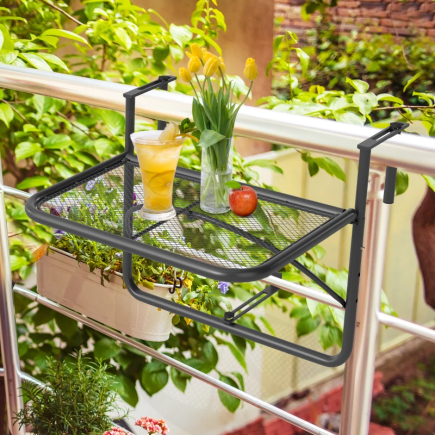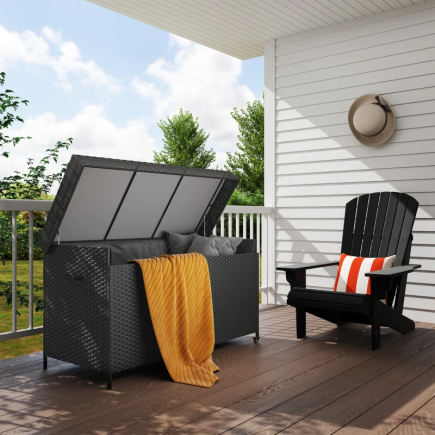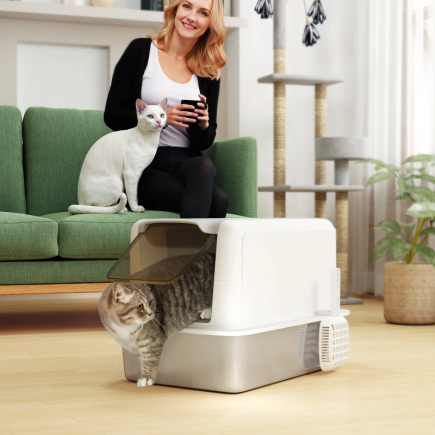Portable ice makers are a convenient way to ensure you always have fresh, clear ice ready for drinks or other needs. However, like any other appliance, your ice maker requires regular cleaning to function at its best. Without proper care, your machine could harbor bacteria, mold, and mineral buildup, affecting both the quality of the ice and the performance of the machine itself.

In this expert guide, we’ll walk you through everything you need to know about cleaning your portable ice maker to ensure it stays efficient and produces clean, clear ice every time.
Essential Cleaning Supplies
Before you start cleaning your ice maker, make sure you have the following tools on hand:
Basic Tools
- Soft cloth
- Mild dish soap
- Vinegar
- Toothbrush
- Gloves
Optional Items
- Descaling solution
- Spray bottle
- Baking soda
- Microfiber towel

Step-by-Step Cleaning Process
Cleaning your portable ice maker isn’t difficult, but it does require attention to detail. Here’s a step-by-step guide to keep your machine in top condition:
Step 1: Unplug and Drain
Always unplug your ice maker before cleaning it to avoid any risk of electric shock. If your model has a drain plug, open it to let any remaining water drain out. If your ice maker doesn’t have a drain plug, carefully tilt it over a sink or basin to remove any leftover water. This ensures that the machine is completely dry before you begin cleaning.

Step 2: Clean Removable Parts
Remove the ice basket, scoop, and drip tray from the machine. Wash these parts with warm, soapy water and a soft cloth or sponge. For areas that are hard to reach, such as the corners of the basket or the scoop, use a toothbrush to scrub away any buildup. After cleaning, rinse all the parts thoroughly and let them air dry completely to prevent any mold growth.

Step 3: Apply Cleaning Solution
Mix a 1:1 ratio of vinegar and water (or use lemon juice as a natural alternative) in a spray bottle. Apply this solution to the interior of the machine using a soft cloth. Avoid using bleach or harsh chemicals, as they can damage the internal components of the machine. Vinegar is an excellent option because it’s safe, effective, and non-toxic.

Step 4: Scrub the Interior
Using the toothbrush, gently scrub the water lines, corners, and other hard-to-reach areas. Pay special attention to the lid and reservoir, where buildup tends to accumulate. This step helps to remove mineral deposits, mold, and bacteria.

Step 5: Descale (If Needed)
If you live in a hard water area, you’ll likely encounter mineral buildup in your ice maker. To tackle this, use a descaling solution or continue with the vinegar solution. Pour the solution into the reservoir and run a cleaning cycle, allowing the solution to work its way through the system. Discard any ice made during this process.

Step 6: Run Cleaning Cycles
Once you’ve applied the cleaning solution and scrubbed the interior, run 2-3 cleaning cycles. This will allow the cleaning solution to circulate through the machine and clean internal components. Remember to discard any ice produced during these cycles.
Step 7: Rinse Thoroughly
Fill the machine with clean water and run several rinse cycles to ensure that all cleaning solution has been flushed out. You should continue running cycles until the water is clear and free of any cleaning solution.
Step 8: Wipe Down and Dry
Once the machine has been rinsed thoroughly, use a microfiber towel to wipe down both the interior and exterior. Leave the lid open to allow the machine to air dry completely. This helps prevent moisture buildup, which can lead to mold or bacteria growth.
Optional: Clean the Exterior
While the focus is on cleaning the interior, it’s also important to maintain the exterior of your ice maker. Wipe down the outer surface with a mild soap solution or vinegar. For stainless steel models, consider using a stainless steel polish to maintain their shine and prevent fingerprints.
Regular Cleaning is Important
Bacteria Growth
Portable ice makers are prone to bacterial and mold growth if they are not cleaned frequently. Bacteria thrive in moist environments, and with constant exposure to water, ice baskets, and drip trays, your ice maker becomes a breeding ground for microbes if not properly maintained. These microorganisms can transfer onto the ice, contaminating it and potentially causing illness.
Cleaning your machine regularly removes any potential buildup of bacteria, helping to maintain the health and safety of your ice.
Poor Ice Quality
In addition to bacteria, mineral deposits can lead to poor-quality ice. Hard water, in particular, contributes to the accumulation of minerals like calcium and magnesium. These minerals form an unpleasant coating on the ice maker’s internal components, affecting the clarity and taste of the ice.
If left unchecked, the buildup of minerals can create problems in ice production, including slow cycles and less-clear ice. Regular cleaning removes these deposits, ensuring that the ice produced is clear, fresh, and of the highest quality.
Reduced Lifespan
When an ice maker isn’t cleaned properly, internal components such as water lines and reservoirs can suffer from mineral buildup, mold growth, and general wear. Over time, these issues can shorten the machine’s lifespan, requiring costly repairs or even the replacement of major parts.
By keeping your ice maker clean, you help prevent these issues from arising, ensuring that your machine remains in good working condition for years to come.
Recommended Cleaning Frequency
Cleaning frequency depends on several factors, such as how often you use your ice maker, the quality of the water, and your local environment. Here’s a general guideline:
| Usage | Recommended Cleaning Frequency |
| Heavy Use | Every 2–3 weeks |
| Regular Use | Every 4–6 weeks |
| Infrequent Use | Every 6–8 weeks |
| Hard Water Areas | Every 3–4 weeks |
Maintenance Tips
To keep your ice maker functioning efficiently and prevent issues, here are a few maintenance tips:
- Use Filtered Water: Filtered water reduces mineral buildup, helping to keep your ice maker clean for longer periods.
- Empty the Ice Bin Regularly: Regularly empty the ice bin to prevent melting ice from creating a breeding ground for bacteria.
- Store in a Dry Place: When not in use, store your ice maker in a cool, dry place to prevent moisture buildup.
Troubleshooting Common Cleaning Issues
Even with regular cleaning, you might run into a few common problems. Here’s how to troubleshoot:
Odours
Cause: Leftover cleaning solution or stagnant water.
Solution: Run additional rinse cycles with clean water until the smell disappears.
Bad-Tasting Ice
Cause: Residual cleaner or contaminants.
Solution: Thoroughly rinse the machine and run more cleaning cycles to remove any remaining cleaner.
Slow Ice Production
Cause: Mineral buildup or clogged water lines.
Solution: Descale the machine and clean the water lines using vinegar.
Regular cleaning is essential to keeping your Portable Ice Maker in top shape. It ensures that the ice produced is clean, clear, and safe to consume while preventing mold, bacteria, and mineral buildup. By following the simple steps outlined in this guide and sticking to a consistent maintenance schedule, you’ll prolong the life of your machine, avoid costly repairs, and enjoy fresh, high-quality ice whenever you need it.
So, make cleaning a regular part of your ice maker routine, and enjoy crystal-clear, great-tasting ice for years to come.
FAQs
1. How to unclog a portable ice maker?
To unclog a portable ice maker, drain the water, then fill the reservoir with a mix of vinegar and water. Run a cleaning cycle to flush out mineral buildup and debris.
2. How to remove calcium from an ice machine?
To remove calcium from an ice machine, gently scrub the buildup using a soft-bristle brush and a baking soda and water paste. Avoid harsh cleaners or tools that can scratch or damage the interior.
3. Is it safe to run a cleaning cycle with dish soap in the reservoir?
No, dish soap can cause excess suds and may damage the machine. Use only vinegar or descaling solutions recommended by the manufacturer.






















